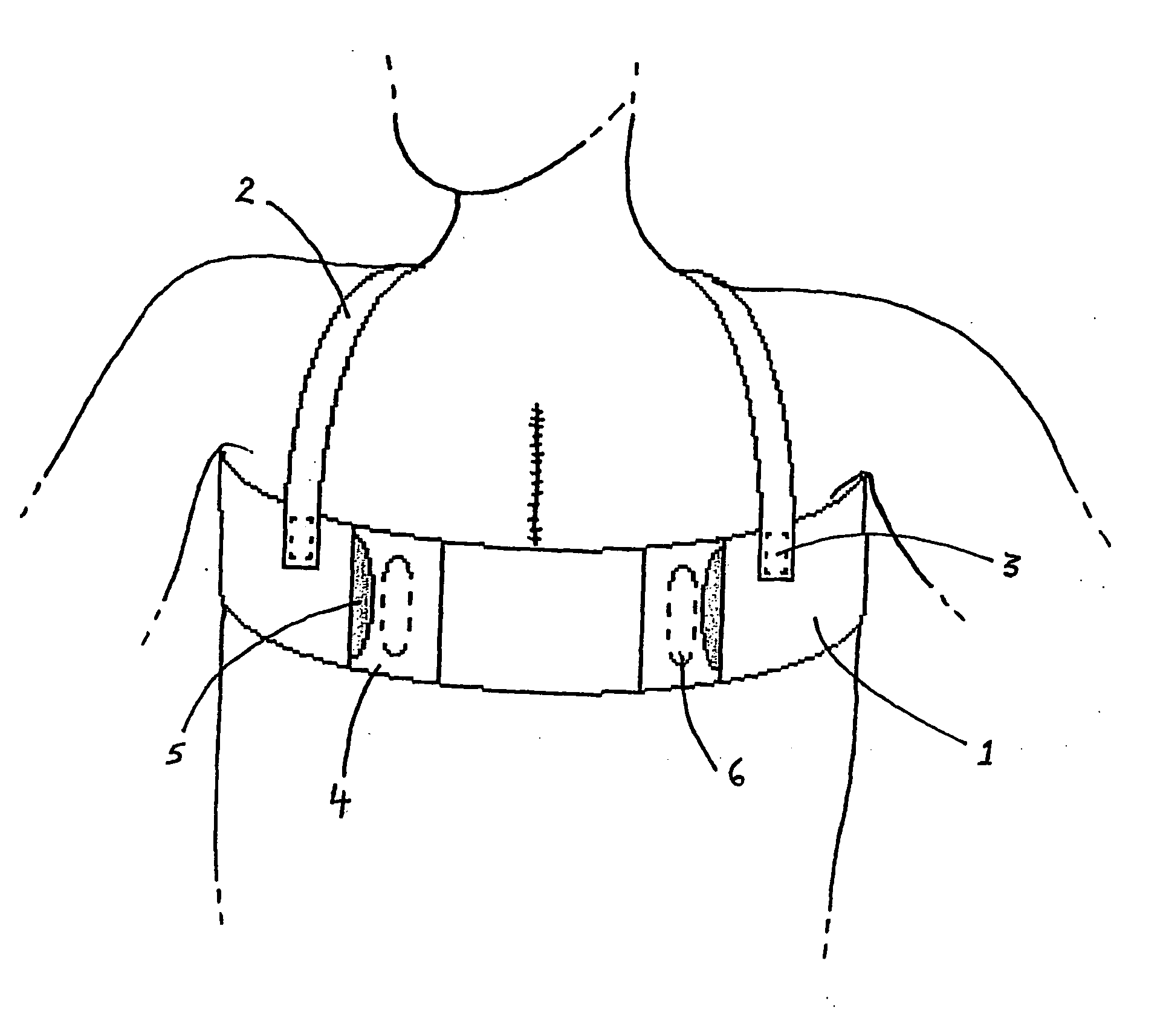Post-operative vest
a vest and post-operative technology, applied in the field of post-operative vests, can solve the problems of not allowing the patient to breathe freely, not providing sufficient support, and affecting the patient's recovery, so as to reduce the inhibition of breathing and reduce the pain
- Summary
- Abstract
- Description
- Claims
- Application Information
AI Technical Summary
Benefits of technology
Problems solved by technology
Method used
Image
Examples
Embodiment Construction
[0029]FIG. 1 shows a perspective view of the post-operative chest support of the present invention. The support comprises a chest encircling band 1 constructed of “Millerighe” bandage material. The band is shown in a closed position, as it would be worn around the chest of a user. Braces 2 are fixed to the rear of the band and are securely stitched in place. The braces are removably attached towards the front of the band (from the wearer's point of view) by Velcro strips 3. The external surface of the band, i.e. the surface not in contact with the chest of the user, has pockets 4 which are attached to the band 1 and have an opening 5 for the user's hand to enter and grip the handle 6. The handle 6, shown by hash lines, is concealed from general view within the pocket 4.
[0030]FIG. 2 shows the post-operative support in an open configuration, i.e. not worn by a patient. The band 1 has two free ends 7 and 8 bearing complimentary Velcro strips 9 and 10 for securing the band around the c...
PUM
 Login to View More
Login to View More Abstract
Description
Claims
Application Information
 Login to View More
Login to View More - R&D
- Intellectual Property
- Life Sciences
- Materials
- Tech Scout
- Unparalleled Data Quality
- Higher Quality Content
- 60% Fewer Hallucinations
Browse by: Latest US Patents, China's latest patents, Technical Efficacy Thesaurus, Application Domain, Technology Topic, Popular Technical Reports.
© 2025 PatSnap. All rights reserved.Legal|Privacy policy|Modern Slavery Act Transparency Statement|Sitemap|About US| Contact US: help@patsnap.com



